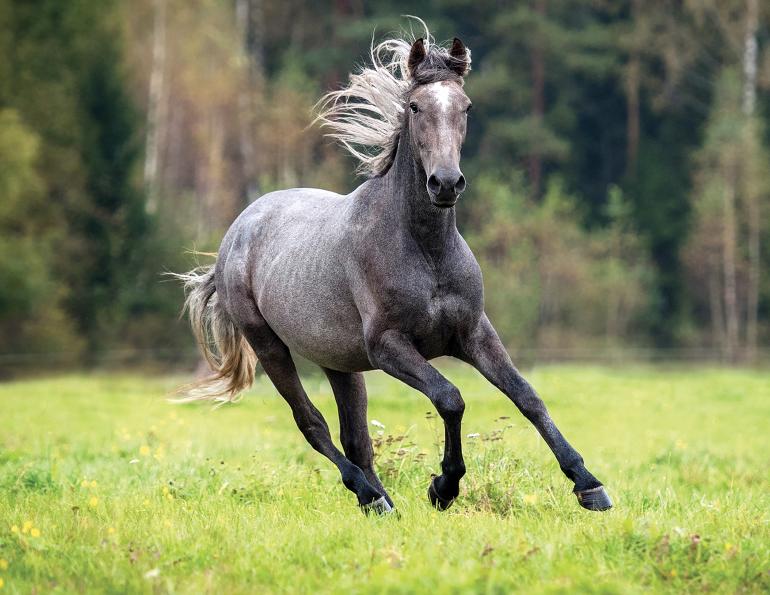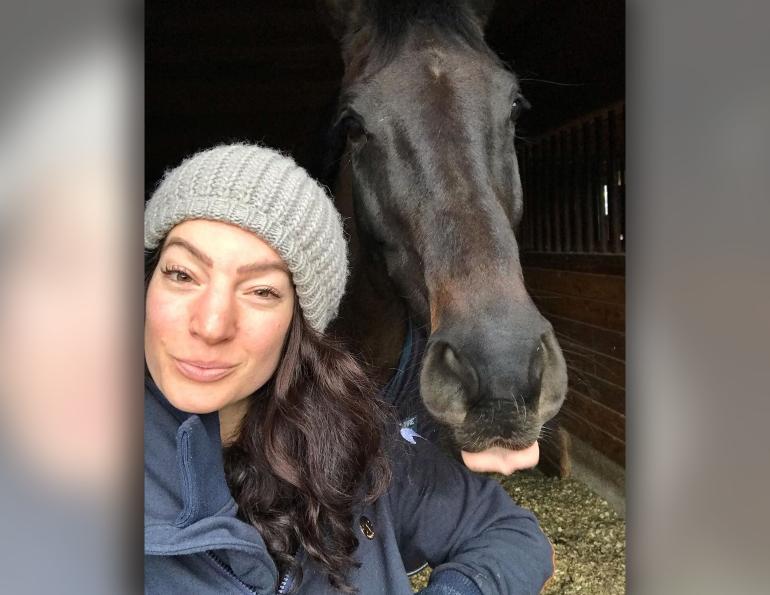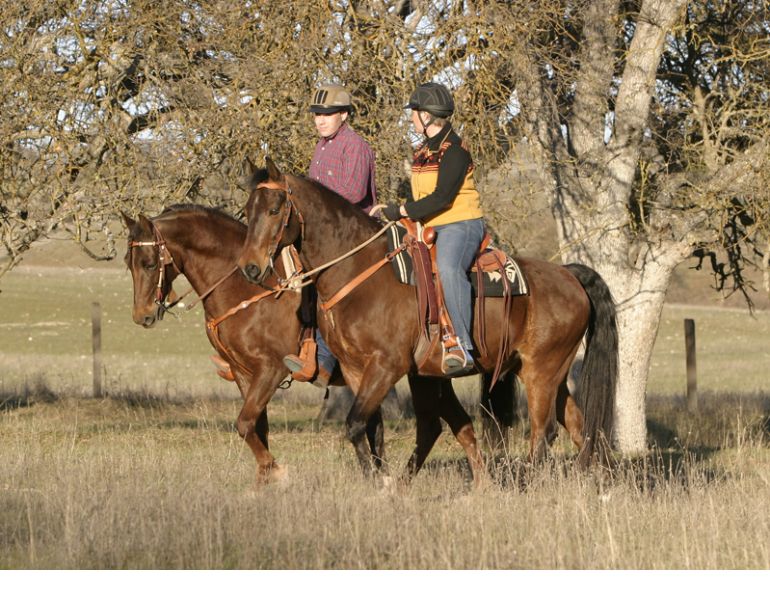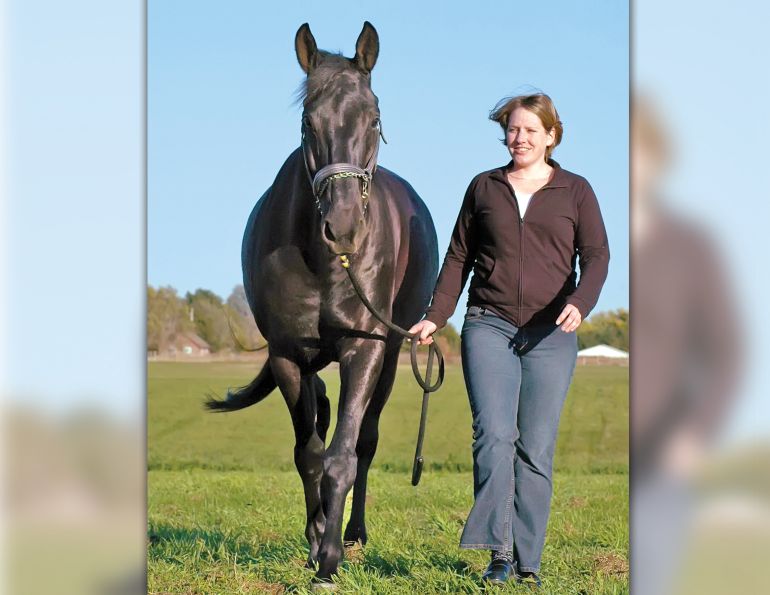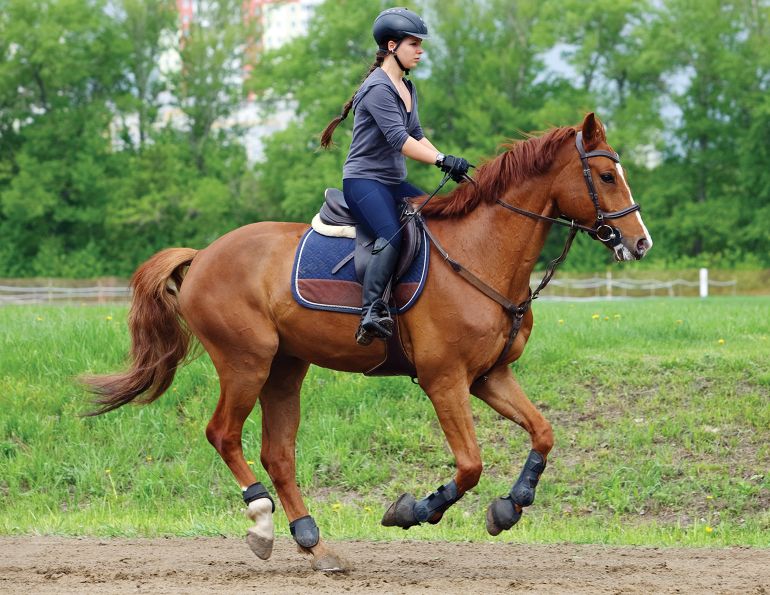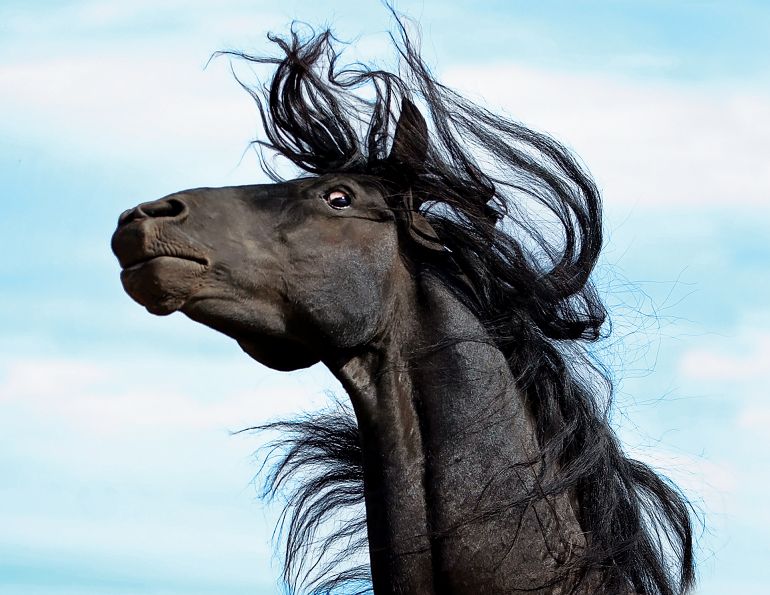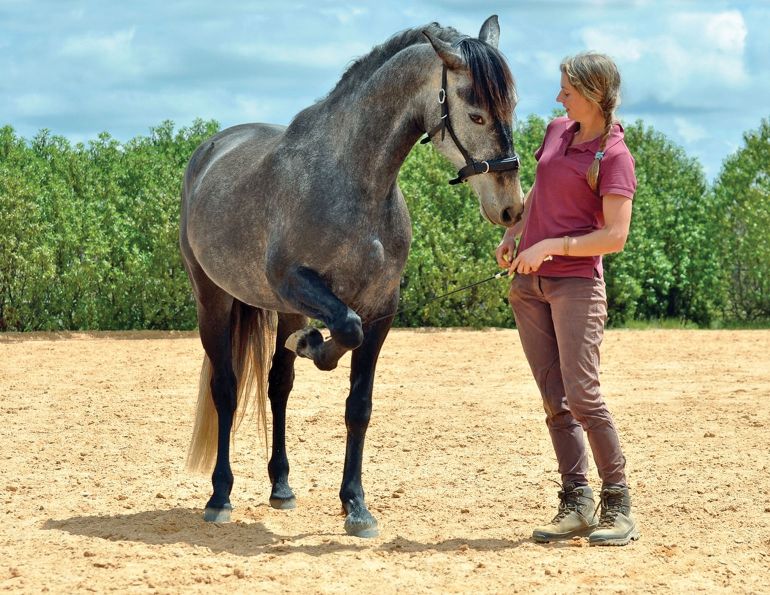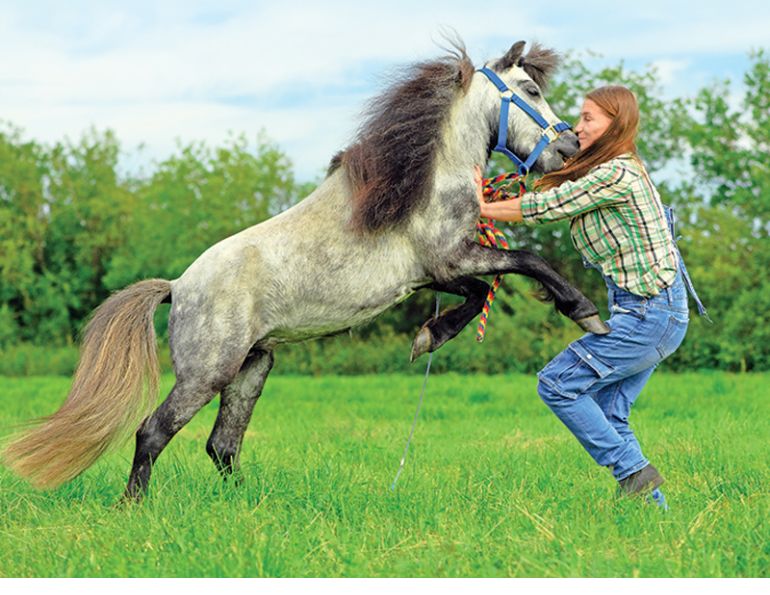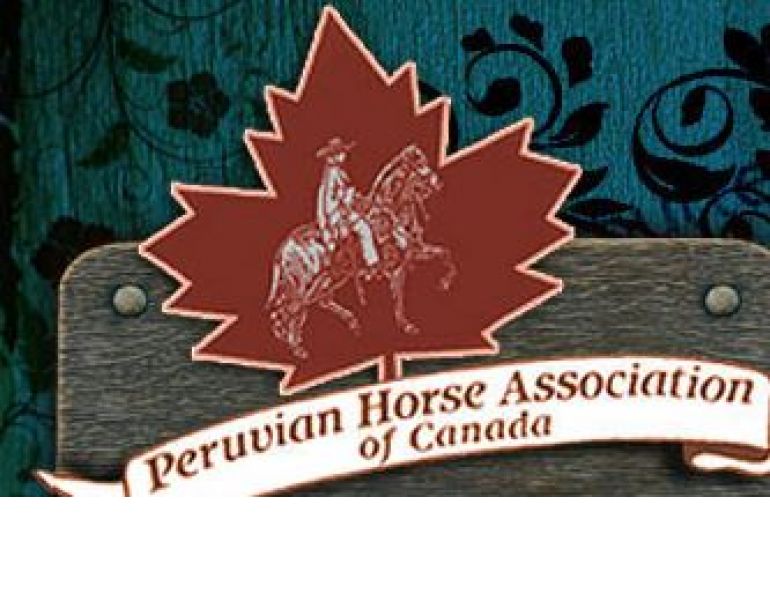By Jec A. Ballou
Should young horses be left in pasture to grow up or brought in to begin their training? While arguments can be made in favour of each plan, the ideal approach is actually somewhere in the middle. In order to enjoy athletic lives later on, youngsters do need regular exercise, but the structure of their training should differ from that of a mature horse. Primarily, it should be shorter, slower, and avoid concussive skeletal forces.
Physiological studies have shown that horses receiving appropriate exercise in the first three years of life are better adapted — and commonly sounder — during their riding and driving careers later on, when compared to horses that were not exercised until their third or fourth year. As soft tissues like tendons and ligaments grow in these initial years of life, they are highly responsive to exercise stimulus. This means that while they are forming and growing, they can add power and elasticity and resilience based on input received from exercise. In other words, exercise leads to the development of higher quality tissues. For most breeds, this opportunity of responsiveness diminishes significantly after the third year.
Rather than being detrimental, early exercise has a protective effect on the horse’s musculoskeletal system over the long term. It develops stronger musculoskeletal structures (ligaments, tendons, muscles). This in turn allows bones and joints to mature without undue stress. Further, early exercise helps muscles make adaptations to aerobic stimulus, leading to more efficiency down the road. During this phase, muscles become adept at metabolizing energy — storing oxygen and using fat as a fuel source. Their capillary networks enlarge and mitochondria density improves. This sets up the mature horse to meet the demands of discipline-specific training without strain and poor muscle function.
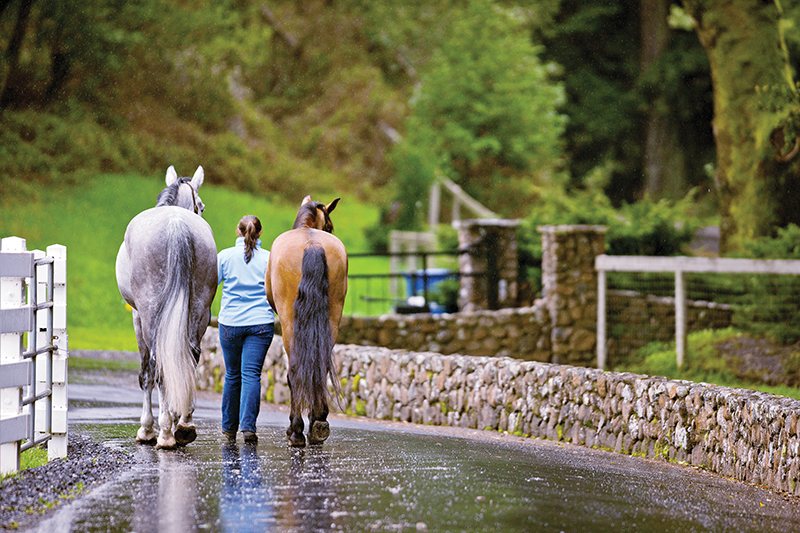
As an alternative to a longer trail hike, take your young horse on brisk walks of ten minutes up and down the driveway, two or three times a day. An older quiet horse can come along to help quiet an anxious youngster. Photo: Shutterstock/Erickson Stock
From a mental and physical perspective, leaving a horse basically untouched until his third year is more harmful than maintaining a small steady routine of exercise all along. Nowadays, most vets agree that gentle exercise can be introduced to yearlings and continued until they are broke to ride. But a young horse’s regime does have special considerations. This means owners and trainers need to think outside the box in terms of what a daily training session might look like. It should not just be an abbreviated version of what older horses in the stable are doing. In addition to the number one rule that all youngsters should spend the majority of their time living outside in a pasture and moving around naturally, the basic principles for exercise are as follows:
- Brief but frequent sessions (i.e., 10-15 minute sessions daily, or a couple of these mini sessions per day three times per week);
- Focus on general movement, nothing sport-specific;
- Allow plenty of time to pause and process what they’re doing (and rest their tissues) during any session;
- Avoid skeletal concussion (this includes hard ground, repetitive circles or longing, jumps, and sharp turns or lateral exercises);
- Avoid exercises involving excessive speed and/or intensity;
- Do not restrict the neck in any particular frame. Allow the horse to find a neutral balance on his own, which ensures that the vertebrae at the base of his neck, which are still growing and forming in the early years, will not be compromised.
Taking all this into account, what might these mini training sessions look like? The following activities meet the positive criteria for one- to three-year olds. These can each be a session on their own or mixed and matched to add novelty. With some creativity, you will no doubt come up with your own as well.
Related: Training the Green Horse
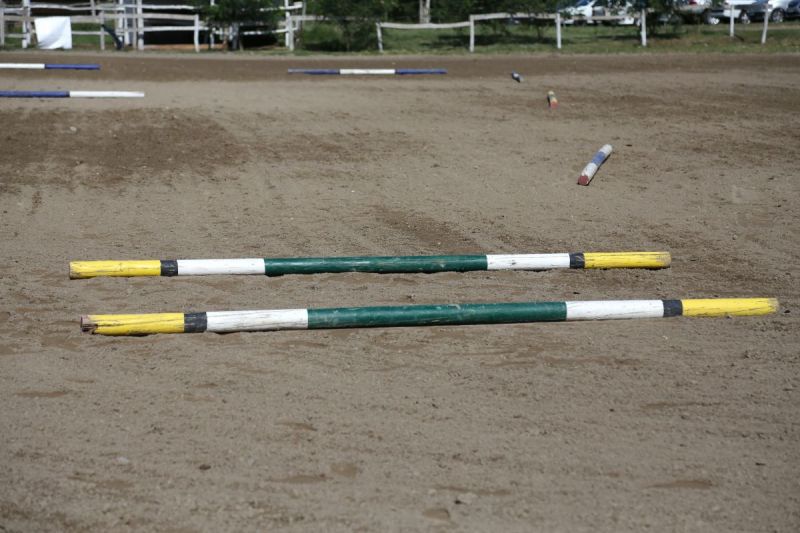
Ten-minute sessions in the ring walking across and around poles on the ground will help the young horse organize his body and adjust the placement of his feet. Photo: Shutterstock/Accept Photo
Ground Poles
While you want to avoid the concussive forces of jumping or raised poles, you do want to introduce your youngster to tasks that require him to organize his body and adjust his foot placement. This builds neural pathways that will lead to higher athletic capability later on. With poles arranged in various positions on the ground, practice sequences of walking across, around, and between them. I like to spend a focused ten-minute walk-only session a couple of times per week. As the horse grows and develops, some days he will seem much more coordinated than others and that is perfectly okay. If he initially seems apprehensive or trips over poles, make creative patterns wandering between and around them at first.
Controlled Wandering
Rather than longing youngsters around repetitive circles, which torques their lower limbs and developing joints, I recommend what I call “controlled wandering” on a longe line. This involves traveling around an arena or field combining a variety of loopy circles and straight lines. By walking quickly or jogging alongside the horse, you’re asking him to sync up with your strides and mirror your movements around a large area. This way, you’re getting the exercise benefit that comes with longing without the negative physical consequences.
Related: Saddle Fit and the Growing Horse
Ponying and Trail Hikes
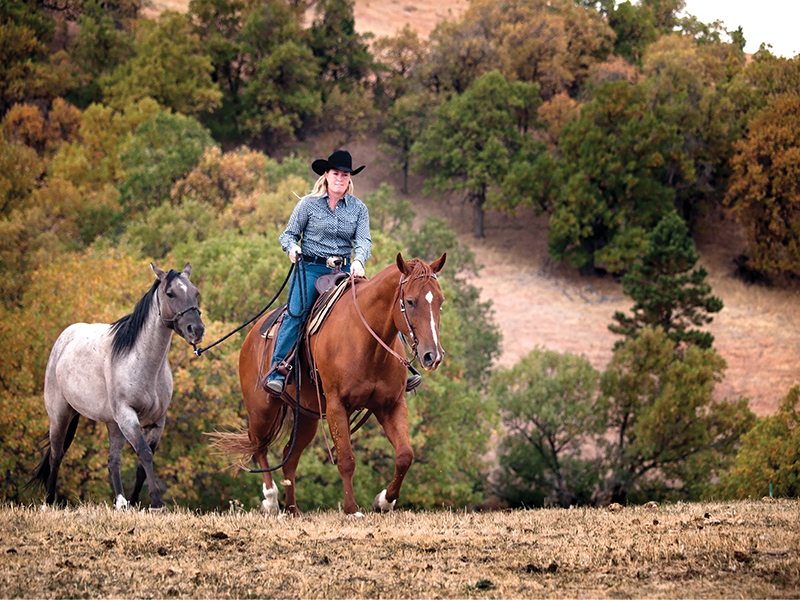
When ponying the young horse alongside another, aim to travel at walk for at least a mile or about 20 minutes. Photo: iStock/Nelson Arts
The simple activity of continuous walking at a prescribed pace offers numerous benefits for a young horse. Leading him in-hand on power hikes or ponying him alongside another horse helps him develop a rhythmic gait, creates proprioceptive gains on changing terrain, and makes good use of straight lines (as opposed to detrimental repetitive circling) for exercise. As a general rule, aim to travel at least a mile or for 20 minutes. As long as your youngster is not too anxious, however, you can walk up to four miles on these outings. Whether you are leading or ponying, be sure to change sides periodically to mitigate asymmetry in the horse’s body posture.
One way to add a mile or longer outing is to briskly walk your youngster two or three times per day up and down the driveway for ten minutes continuously. These consistent doses of exercise result in positive adaptations over the long haul. It is also a useful way to introduce the practice of shortening and lengthening his steps as you ask.
A young horse’s early training exercises should be simple, short, and consistent. Consistency of positive bone and soft tissue stimulus is what leads to a sounder, saner athlete down the road. Remember, the goal is plain and straightforward movement, not sport-specific training or lathered sweaty workouts. Be creative and enjoy the fact that you are setting the horse up for a less stressful performance life.
Related: Therapeutic vs Conditioning Exercises
Related: Feeding the Growing Horse for Health and Performance
Photo: Shutterstock/Rita Kochmarjova



